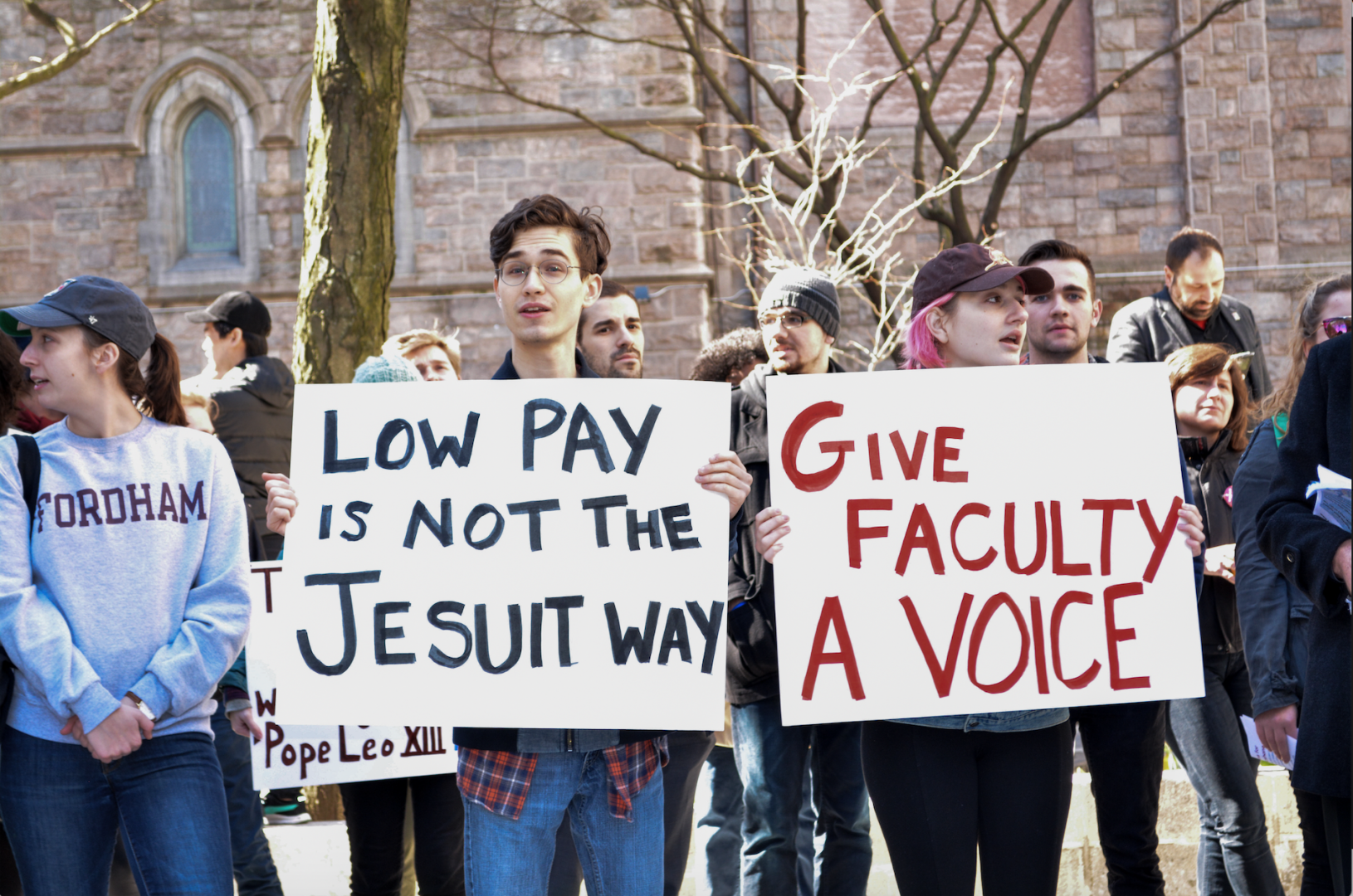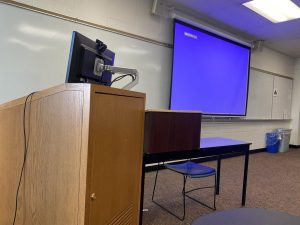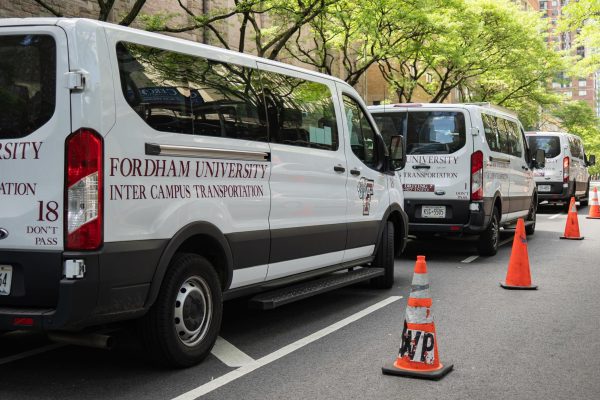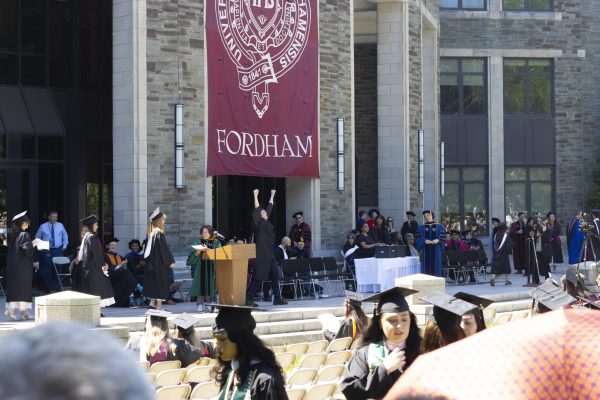The ‘Inside Outsider,’ McShane’s Farewell After 19 Years as President
McShane discusses the ‘saddest moment’ of his presidency and his deep love for the Fordham community
COURTESY OF CHRIS TAGGART VIA FORDHAM NEWS
After 19 years at Fordham, McShane will be leaving behind a memorable legacy defined by campus expansion and combating the COVID-19 pandemic.
During his 19 years serving as president at Fordham University, Rev. Joseph M. McShane, S.J., made his curiosity toward the Fordham community known. If one found themselves in an interaction with him, it likely started with him asking this question: “Where are you from?”
Your response is followed by a series of facts about the area, the Fordham connections surrounding your place of upbringing and recommendations for locations to check out.
After one conversation with McShane, it feels as though he must have seen every corner of the U.S. Throughout his life in academia, he moved from the Northeast to the West to the Midwest, until he decided to return home — not just to New York, but to Fordham.
When McShane took over as president, he referred to himself as “the inside outsider,” because despite having been away from Fordham for five years, his ties to the university date back 93 years when his father enrolled at the university.
Upon accepting his position as president, the “inside outsider” outlined his main goals to develop the Lincoln Center campus, improve fundraising and enrollment rates, and listen to the concerns of students and faculty.
“It’s my belief and my hope that everyone at Lincoln Center, every student at Lincoln Center, has to feel that he or she has access to everything that Rose Hill has.” Rev. Joseph M. McShane, S.J., university president, in a 2003 interview
Efforts as a Visionary
When McShane came to Fordham as the university president in 2003, the Lincoln Center campus was in its earliest phase, and one of his goals was to help expand the campus.
“It’s my belief and my hope that everyone at Lincoln Center, every student at Lincoln Center, has to feel that he or she has access to everything that Rose Hill has,” McShane said in an interview with The Observer in 2003.
At that time, the Lincoln Center campus mirrored its footprint from the 1960s — seven acres filled by the Law School, the Leon Lowenstein Center, Quinn Library and McMahon Hall with its 822 beds. Built for 3,500 students, it was serving 8,000 by the turn of the century.
McShane and the board of trustees developed a “master plan” that was meant to address the facility needs at Lincoln Center at the time as well as anticipate the future.
The blueprint intended to double the size of the campus through expanding the Quinn Library, reconstructing the Law School building, and adding a new student center, dormitory and additional parking — seven new buildings in total. Fordham faced criticism and legal action from neighbors, but the master plan was ultimately approved by the city and finalized in 2014. Construction on the Lincoln Center campus continues today.
In a press conference with The Observer on Nov. 11, 2021, McShane outlined further plans to add more elevators to the Leon Lowenstein Center, as well as expand its footprint to make room for the growing enrollment sizes, arguing that “we still don’t have enough” space on campus.
Under McShane, enrollment rates increased and the university expanded beyond New York.
With facilities being a priority, McShane was also forced to focus heavily on finances from day one. When he took over as president, Fordham’s endowment was experiencing a downturn due to the dot-com bubble burst in 2000 followed by another hit in 2001. At the time, the endowment was approximately $230 million. Although it took another financial hit during the onset of the pandemic, it exceeded the $1 billion mark by the end of the 2021 fiscal year.
Under McShane, enrollment rates increased and the university expanded beyond New York. Fordham’s London Centre campus opened in 2008, and the Class of 2025 is the largest and more diverse class in Fordham’s history.
Vote of “No Confidence”
The past 19 years, however, haven’t been all positive.
In September 2016, a move by the university to overturn a previously agreed-upon contract without the approval of the Salary and Benefits committee caused an infamous tear in the president’s relationship with faculty and staff.
“That is the saddest moment of my presidency.” Joseph McShane, S.J.
The Faculty Senate stated that the administration violated university statutes, and on April 7, 2017, the senate approved a motion stating the imposed health care plan “would result in significantly increased costs for faculty and staff and would threaten their health, well-being, and incomes.”
After a series of failed negotiations between the administration and the faculty, 431 out of 488 faculty members voted for “no confidence” in McShane.
“That is the saddest moment of my presidency,” McShane said, reflecting on the first, and only, time the university’s Faculty Senate ever voted no confidence in a president.
A year after the vote took place, Andrew H. Clark, a faculty senate officer during the “no confidence” vote and current professor at Fordham, said not much has changed in the conduct of negotiations between the Faculty Senate and the president and Board of Trustees.
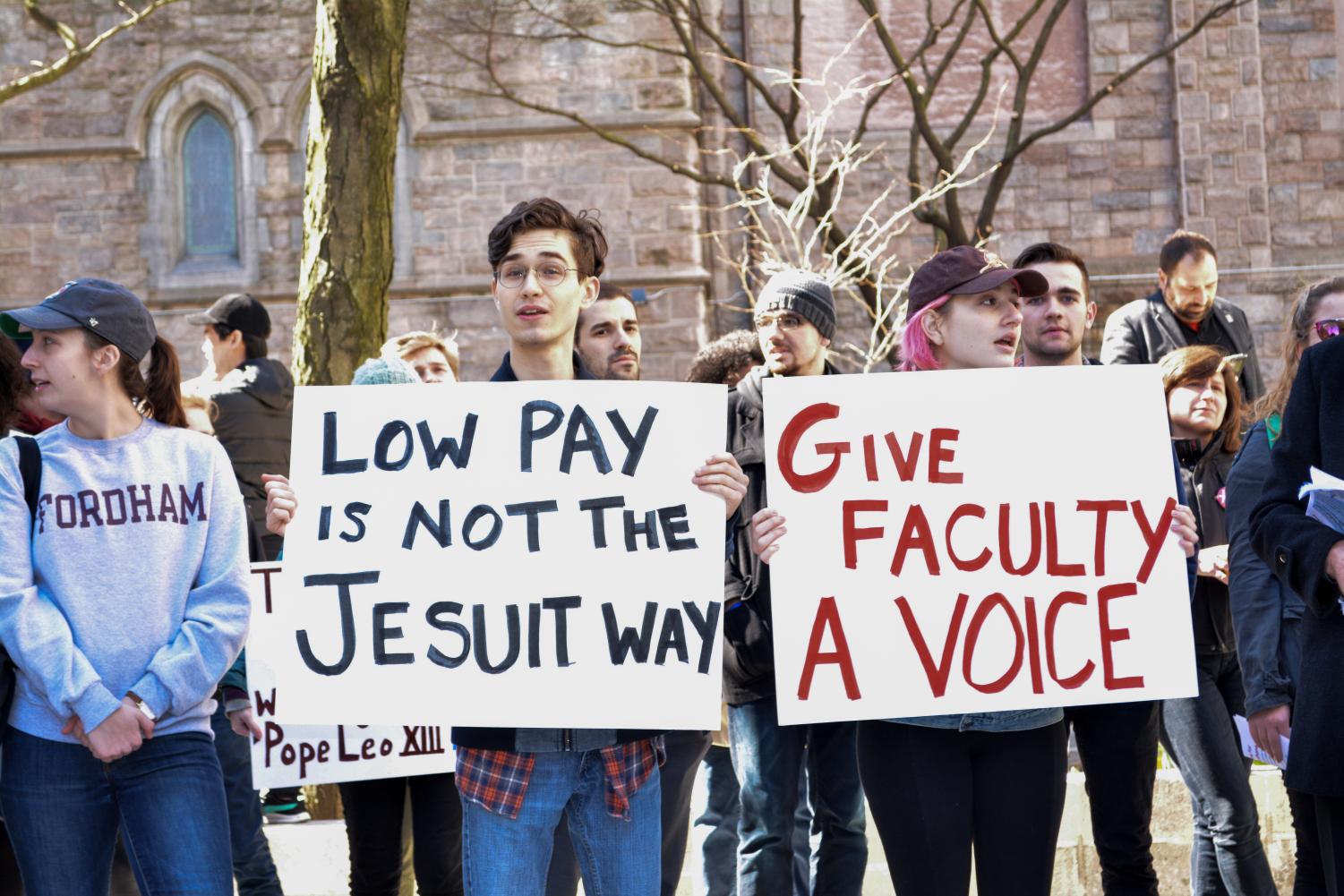
The issue of shared governance — the principle that both the faculty and the administration have separate areas of responsibilities — was at the root of the “no confidence” vote, and it continues to present itself in faculty-president relations today, according to Faculty Senate President John Drummond.
Members who advocate for shared governance believe that faculty should have “a substantial voice, even if it’s not decisive in terms of making the final decisions,” Drummond said.
Drummond wasn’t a Faculty Senate officer at the time of the vote, but he believes that in years following that there was an effort on both sides to work more cooperatively. “That was sometimes successful and sometimes less successful,” he said.
Even though he was disappointed by the vote, McShane made it clear in the aftermath that “it didn’t diminish the high regard and affection that I have for the faculty.”
Another point of contention between the president and the faculty is the declining number of tenure-track faculty. This is a trend that is seen in universities across the nation. According to the American Association of University Professors, the portion of faculty members nationwide who were tenured or on the tenure track in 1975 was 45%; since then it has steadily declined, while part-time faculty has steadily increased. In 2015, the portion of tenured or tenure track faculty was 30%.
Contingent or part-time faculty “have a significantly different kind of relationship to the university than tenure-stream faculty,” Drummond said. The decision of which faculty members receive tenure is left up to the budget decisions overseen by the president.
McShane acknowledged that the decrease in tenure faculty is a concern. “It is with great pain,” he said, that he makes these budgetary decisions. He said he tries to balance what he feels students should pay versus the amount he feels faculty should be compensated. He stressed the necessity of the endowment to mitigate some of this issue.
“There’s also a genuine friendship that many people have with Father McShane.” Faculty Senate President John Drummond
According to Bob Howe, assistant vice president for communications and special adviser to the president, 31% of the endowment fund is directed to scholarships, financial aid and academic support — most of which is faculty chairs.
“There’s also a genuine friendship that many people have with Father McShane,” Drummond said. “He is quite a storyteller and has a great sense of humor, and I think that he cares deeply about the university, its faculty and its students.”
Student Relations
McShane created traditions to get to know the students and faculty at Fordham, such as helping first-year families at Rose Hill on move-in day and shaking every student’s hand at the President’s Ball. He also hosts a dinner with the executive boards of the United Student Government (USG) of Rose Hill and Lincoln Center once a semester.
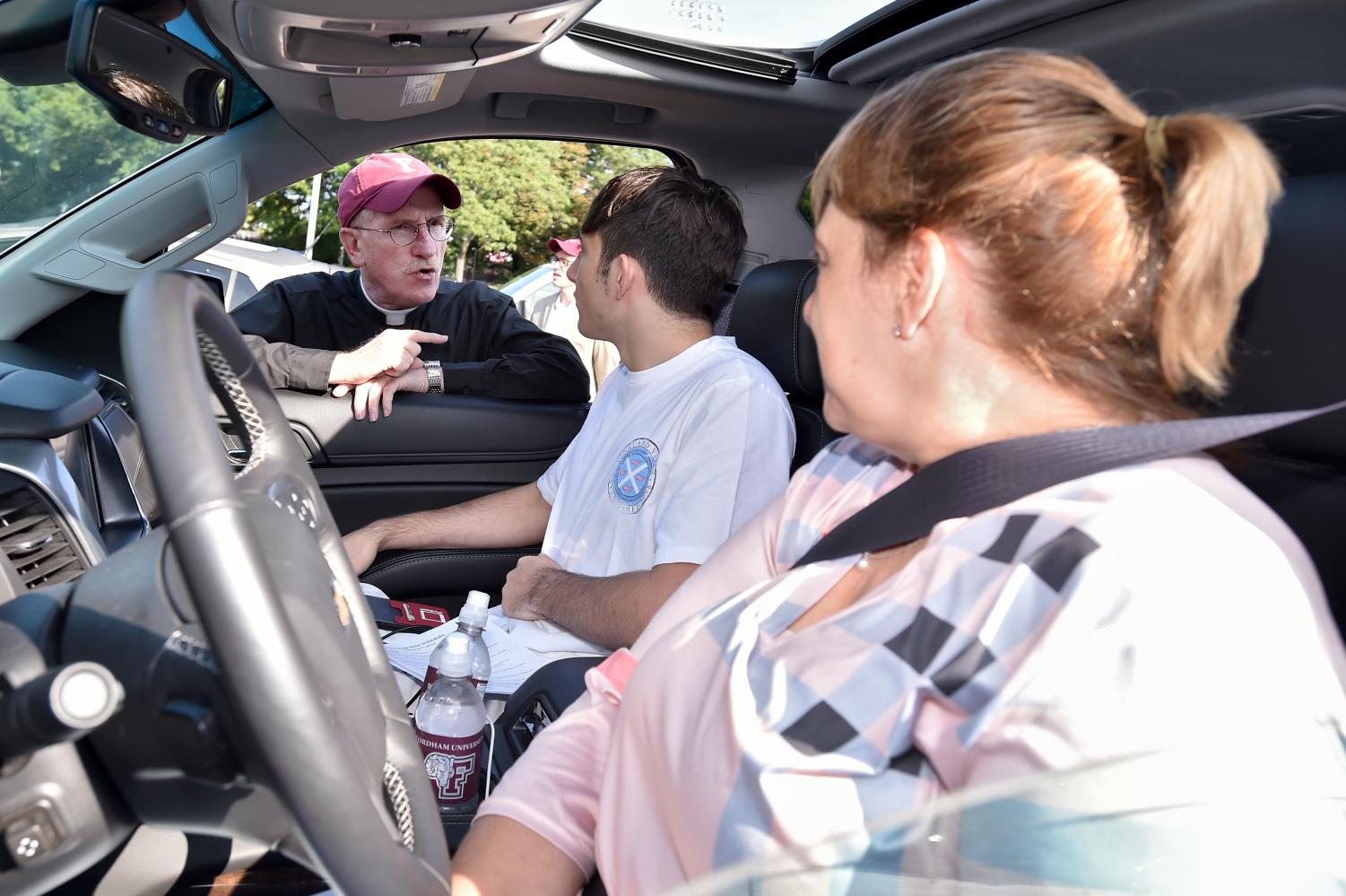
Thomas Reuter, Fordham College at Rose Hill ’22 and president of USG at Rose Hill, said he developed a genuine friendship with McShane through his positions on USG. When he would see McShane around on campus, McShane would stop to have a conversation with him.
“I think his interactions are kind of dual purpose,” Reuter said. “One is very welcoming and compassionate, and the other is extraordinarily motivating or inspiring.”
Not all students experience the same engagement with the president. Students at the Lincoln Center campus expressed having fewer interactions with McShane.
“I think he’s a lot less accessible to you if you’re at the Lincoln Center campus,” Zann Ballsun-Simms, Fordham College at Lincoln Center ’16, said based on her time at the university.
Ballsun-Simms, who was a social justice leader with Fordham’s Dorothy Day Center and president of the Black Student Alliance, also noted that she felt McShane tended to surround himself with students in more traditional leadership roles, such as USG.
In response to his perceived elusiveness on campus, McShane acknowledged: “At Lincoln Center, at Rose Hill: I can do better at both.”
Racial Injustice
The year 2020 also brought attention to systemic racism and the ongoing fight for the Black Lives Matter movement. Fordham’s history with racism on campus goes back long before 2020, with a particular rise in racist incidents during the 2015-16 academic year.
During the fall 2015 semester, three “bias incidents” were reported, including a racist slur carved on a Black student’s door at Rose Hill and a swastika carved in a bathroom dryer at Lincoln Center. In light of these incidents, six students were invited to speak at the Faculty Senate meeting in November 2015 to address the institutionalized racism at Fordham.
“I’m tired of not feeling safe in my own home, because Fordham is my home.” Zann Ballsun-Simms, FCLC ’16, on racial incidents at Fordham
After the swastika was found in a bathroom at Lincoln Center, McShane addressed the incident in a university-wide email denouncing the white supremacist reference and noted that “We will continue to repudiate such actions whenever they occur, and rise above them.”
Among the students who spoke was Ballsun-Simms. “I’m tired of not feeling safe in my own home, because Fordham is my home,” she said.
Present at the meeting were McShane and Stephen Freedman, university provost at the time. Ballsun-Simms recalled being close to tears while giving her testimony at the meeting. After the students spoke, McShane offered a statement at the meeting: “There is no place for prejudice at Fordham, period.”
Ballsun-Simms said following the meeting that there was some response from the university, but it was “not as strong as it could have been.”
In 2016, McShane released a diversity action plan.
In 2016, McShane released a diversity action plan that created a new senior administrative position, the chief diversity officer, which was filled by Rafael Zapata in 2017; placed priority on diversifying administrative positions and faculty members; and incorporated diversity and inclusion programs into student orientation.
Ballsun-Simms felt McShane’s action plan and statement were a softer approach than the situation necessitated. She wished McShane took more concrete actions, such as condemning the incidents publicly as hate crimes and expelling the students who were involved.
According to Howe, the president doesn’t usually interfere with a student or faculty disciplinary process. He said these circumstances are governed by federal and state laws where it would be unethical for a president to involve oneself.
“In subsequent years, it’s been clear that what I said and what my fellow students said meant nothing,” Ballsun-Simms said, referring to the continued reports of students on campus who have experienced discrimination by members of the Fordham community.
In light of the murder of George Floyd in May 2020, McShane renewed the 2016 action plan, expanding it to include instituting mandatory anti-racism training for faculty, administrators, staff and students, as well as establishing Juneteenth as a university holiday.
McShane also released a statement praying for the families mourning the losses of their children and loved ones and for the ones who have died. His statement received pushback from students who demanded more than “thoughts and prayers.”
Several student petitions were created over the past two years since the murder of George Floyd, demanding the university follow through with cutting ties with the food vendor Aramark, whose income comes from private prisons, and severing Public Safety’s ties with the NYPD. At the Nov. 11 press conference, in response to these issues still being unaddressed by the university, McShane asked for more information on the issues and stated that “together, we can seek certain information.”
He noted that other departments receive these petitions and sometimes he is debriefed during his meetings, but the vice presidents are the ones who deal more closely with the policies affecting students.
“One of the great returns this semester was the return of noise outside my window.” Joseph McShane, S.J.
Facing COVID-19
The COVID-19 pandemic brought unprecedented challenges to the university at the end of McShane’s tenure and will continue to be a challenge for the next president as society experiences surges of the virus and uncertainty over the future of how to live with COVID-19 being endemic.
McShane had to make the difficult decision to send students home for the remainder of the 2020 spring semester and postpone the in-person commencement ceremony for the Class of 2020.
The university returned in partial operations for the fall 2020 semester, with most of the faculty and students conducting classes virtually. For the 2021-22 academic year, Fordham made the decision to return fully operational with safety measures in place, such as mask-wearing and vaccination requirements.
“One of the great returns this semester was the return of noise outside my window,” McShane said of the university’s full reopening a year and a half after students were sent home during the initial outbreak of COVID-19.

Welcoming the Next President
McShane made it clear at the press conference that he is choosing to have little involvement with the search for his successor and gave little information about whom he would like to see in the position next.
The university made the historic announcement on Jan. 21 that the next president will not be a Jesuit, breaking Fordham’s tradition since its founding in 1841.
Reuter, the Rose Hill USG president, expressed his interest in maintaining a Jesuit president at Fordham, stating, “I think that it’s just really important for the university’s identity.”
Lydia Williams, FCLC ’25, disagreed that having a Jesuit president is central to the university’s identity. “I believe that our identity is more deeply rooted in the students’ ability to consistently exhibit Fordham’s values (like Cura Personalis and solidarity or unity) through our academics and ambitions,” Williams said.
“The next person can make a new beginning based on my mistakes.” Joseph McShane, S.J.
Even though she hasn’t met McShane, Williams hopes the next president can bring “the same zeal” for the university and embody the Jesuit tenets, regardless of their religious affiliation.
From the faculty’s perspective, Drummond said the faculty would appreciate a leader who will engage in a more consultative style of governance and take risks in academic programming.
Even though McShane didn’t provide any characteristics he would like to see in the next president, he did stress the importance of the next president being willing to listen.
“The next person can make a new beginning based on my mistakes,” he said.
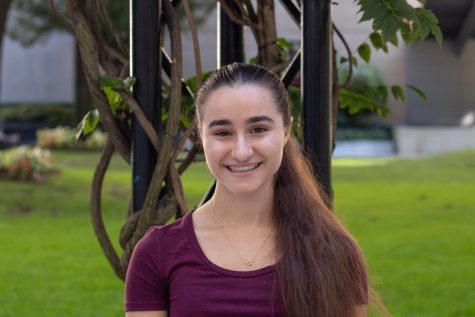
Katrina Lambert, FCLC ’22, is the editor-in-chief for The Observer. She is majoring in journalism and minoring in history. Her favorite part of The Observer has been watching writers grow throughout their time on the newspaper. When she isn’t thinking about The Observer, you can probably catch her running or watching “The Karate Kid” again. She previously worked as an editor in the News section.


